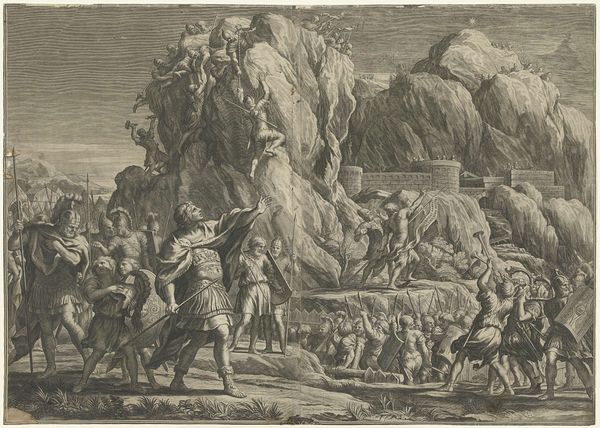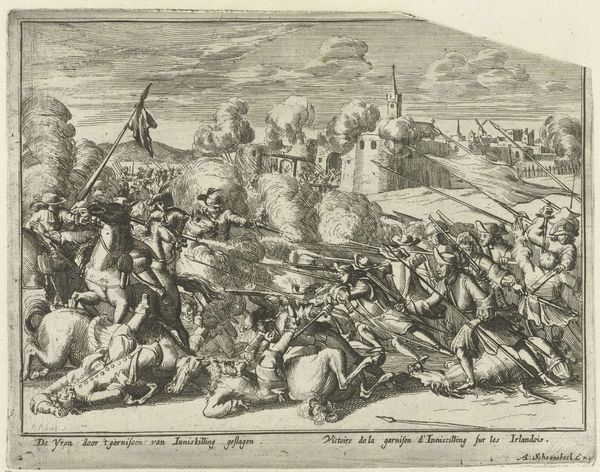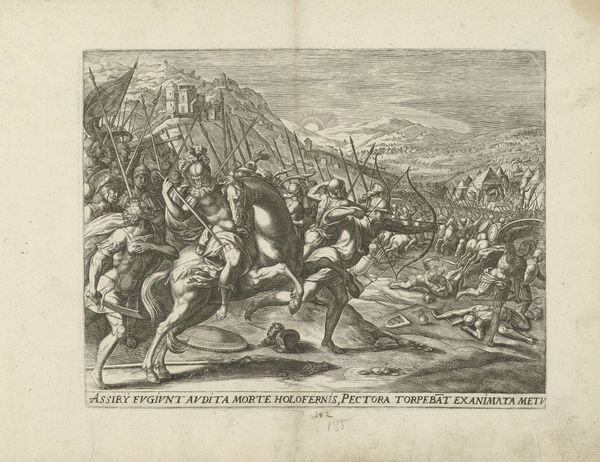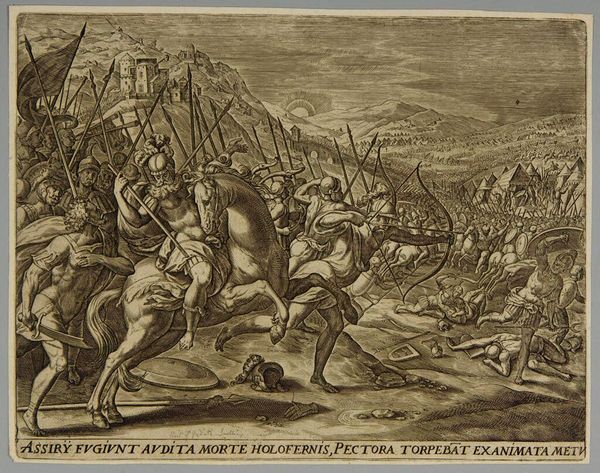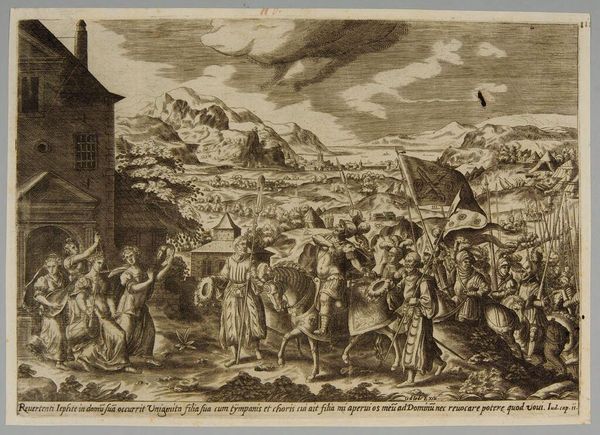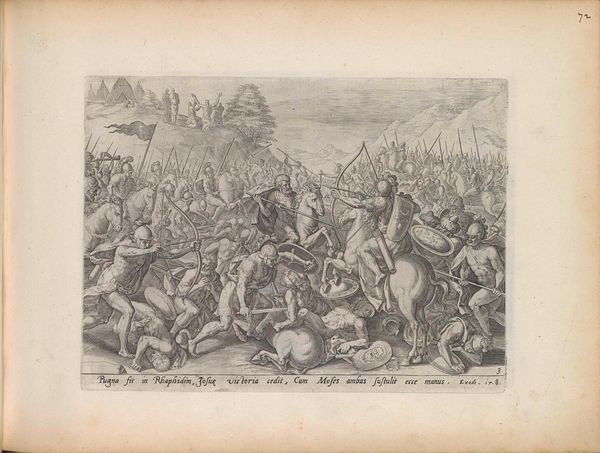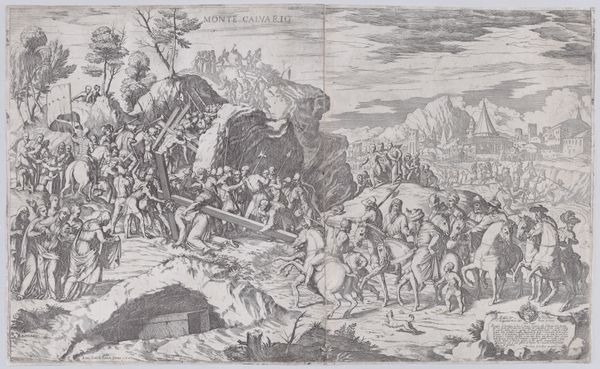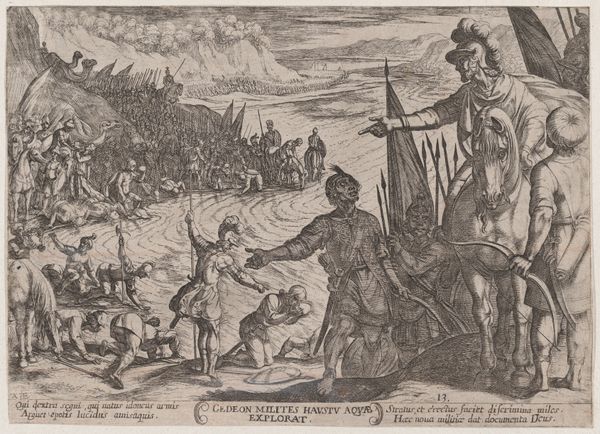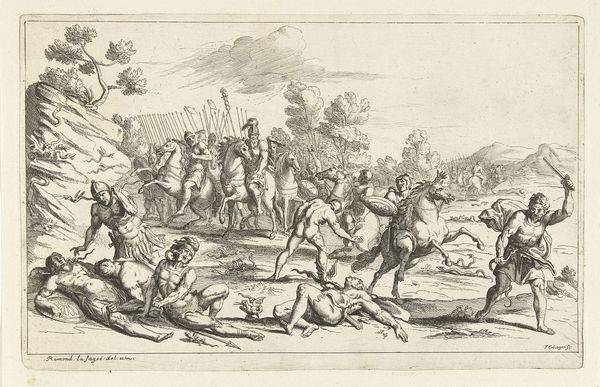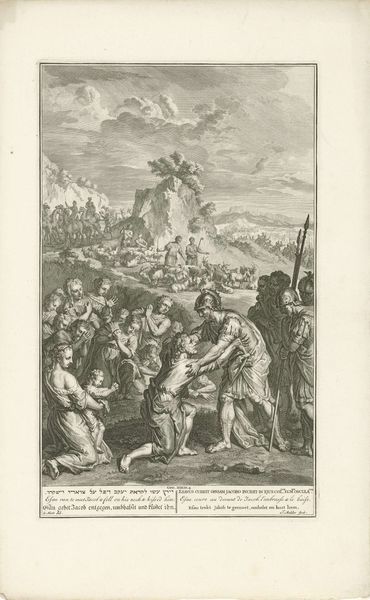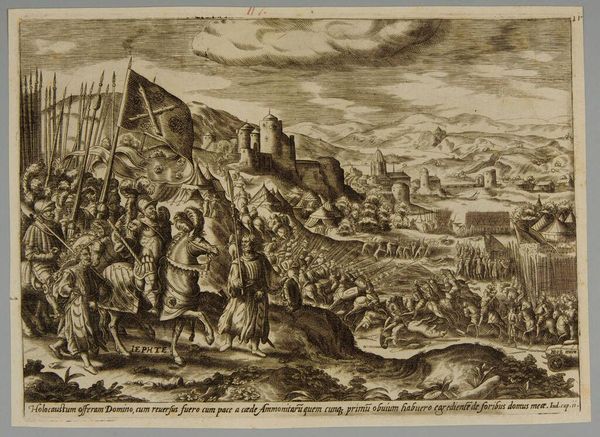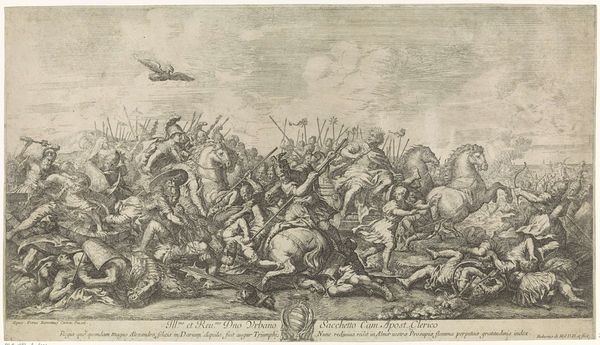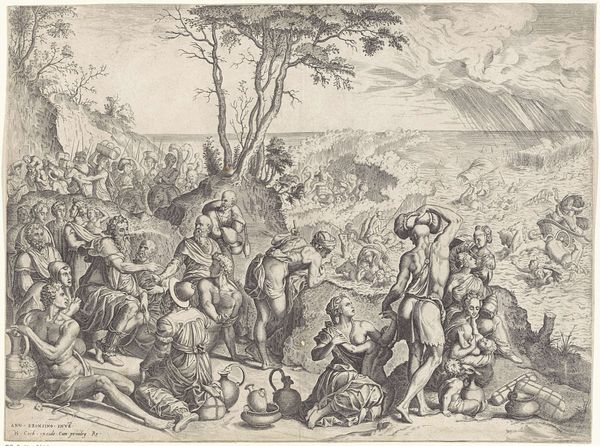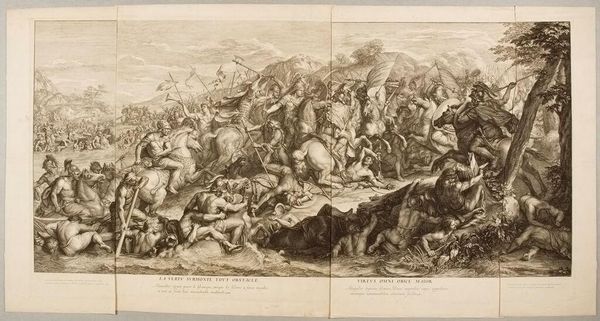
Samson Slaying a Thousand Men with the Jawbone of an Ass 16th-17th century
0:00
0:00
Copyright: CC0 1.0
Curator: This is Anton Wierix II's "Samson Slaying a Thousand Men with the Jawbone of an Ass," housed here at the Harvard Art Museums. What strikes you first? Editor: The sheer violence! The bodies piled on top of each other, the chaos of the battle. It’s a brutal scene. Curator: Indeed. It depicts the biblical story of Samson, using a single, humble weapon to overcome a vast enemy. The jawbone here isn’t just a weapon, it’s a symbol of resourcefulness, of turning disadvantage into overwhelming power. Editor: But isn't that also the problem? That violence is the answer, that power justifies itself, that his rage is righteous. Who are the Philistines in this context? Curator: The symbolic weight shifts depending on the viewer, doesn’t it? Wierix has offered a powerful image. Editor: A powerful image, yes, and one that leaves me unsettled. Violence as spectacle, justified by faith or power—it’s a dangerous narrative. Curator: The potency of symbols to be both inspiring and deeply troubling, I think, is part of the point. Editor: Exactly. And why we need to keep questioning the stories we tell, and how we tell them.
Comments
No comments
Be the first to comment and join the conversation on the ultimate creative platform.
